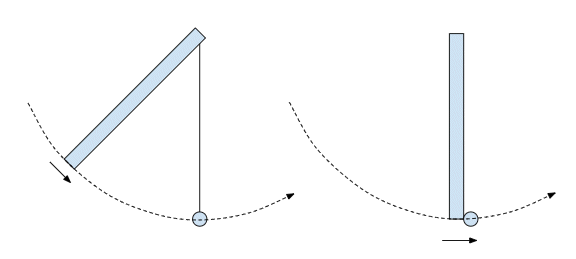Before the collision the rod has angular momentum $I \omega_i$ where $I$ is the moment of inertia of the rod about the pivot and $\omega_i$ is the angular velocity of the rod immediately before the collision.
Whether the ball can be considered to have any moment of inertia before the collision is irrelevant, because it has no angular velocity so it has no angular momentum. If the ball did not stick to the rod after the collision, but bounced off in a straight line, then it would be even more perplexing to work out what its moment of inertia and angular velocity are, because both are constantly changing as the ball moves off in a straight line. However the ball's angular momentum is constant and easily calculated as linear momentum x perpendicular distance from the pivot.
After the inelastic collision the ball sticks to the rod, and both rotate about the pivot with the same angular velocity $\omega_f$. Both the rod and the ball now have angular momentum, the total of which is $(I+mL^2) \omega_f$. Whether you consider the ball and rod to be a single object in which there is no internal motion (ie a rigid body), or two separate objects moving such as to maintain their relative positions, does not make any difference.
It ought to be obvious from the Conservation of Angular Momentum, which you accept does apply in this case, that $\omega_i \ne \omega_f$ if $m \ne 0$.
It is not clear to me what you mean when you suggest that the mass of the ball is converted to heat. Some kinetic energy is lost in the collision, which is why it is called inelastic, and some of this loss becomes heat. But the mass of the ball (or the rod) does not change to any significant degree.

